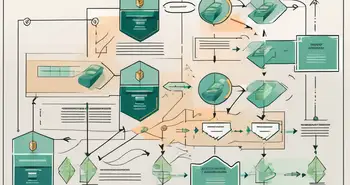Helicopter Money: What It Is and How It Impacts the Economy

Helicopter money is a provocative topic that has taken center stage in economic discussions, especially during crises. The term conjures images of cash falling from the sky, but its implications and mechanisms are profound. In this article, we will dissect helicopter money, exploring its definition, the economic framework that supports it, its operational mechanics, and its comparison with traditional monetary policies. Additionally, we’ll examine the impacts it has on the economy, the criticisms it garners, and some personal insights based on my experience with economic policies.
Understanding the Concept of Helicopter Money
Definition and Origin of Helicopter Money
Helicopter money refers to a non-traditional monetary policy tool where central banks distribute money directly to the public, bypassing conventional channels like banks. This concept was popularized by economist Milton Friedman, who famously used a thought experiment involving a helicopter dropping money to illustrate how direct cash transfers could stimulate economic activity during a downturn.
The origin of the term is rooted in illustrative scenarios rather than actual policy adoption. It gained traction during times of economic distress, such as the 2008 financial crisis and again during the COVID-19 pandemic, prompting governments and central banks to consider more aggressive measures to support the economy. In these instances, the urgency of the economic situation led to innovative policy discussions, with helicopter money emerging as a potential solution to stimulate consumer spending and restore confidence in the economy.
Theoretical Framework Behind Helicopter Money
The theory behind helicopter money is grounded in Keynesian economics, which suggests that increased demand can lead to economic recovery. By injecting money directly into the hands of consumers, helicopter money aims to boost spending, stimulate demand, and ultimately invigorate economic growth. This direct approach contrasts sharply with traditional monetary policy, which often relies on interest rate adjustments and quantitative easing that may not effectively reach the average consumer.
Moreover, this approach is seen as a way to circumvent the limitations associated with traditional monetary policy, such as low interest rates that fail to inspire lending and investment. As someone who has navigated through various phases of economic theory, I can attest to the unconventional insights helicopter money provides, especially when traditional methods fall short. Critics, however, raise concerns about the potential for inflation and the long-term implications of such policies. They argue that while helicopter money can provide a short-term boost, it may lead to a devaluation of currency and create dependency on government support, complicating future economic recovery efforts.
Additionally, the implementation of helicopter money raises questions about equity and distribution. How should the funds be allocated? Should they be targeted towards specific demographics, such as low-income households, or distributed universally? These considerations are critical, as they can significantly affect the overall efficacy of the policy. Policymakers must also consider the potential behavioral responses of consumers; for instance, if people anticipate future cash distributions, they may alter their spending habits in ways that could undermine the intended stimulative effect. Thus, the design and execution of helicopter money initiatives require careful planning and consideration of broader economic dynamics.
The Mechanism of Helicopter Money
How Helicopter Money is Distributed
The distribution of helicopter money can take several forms. One common approach is direct cash transfers to individuals or households, enabling immediate access to funds without intermediary institutions. Governments might issue checks or utilize digital platforms to deposit money directly into citizens' bank accounts.
Another method can include tax rebates or unconditional basic income initiatives designed to provide ongoing support. In my experience communicating with policymakers, effective communication about the purpose of helicopter money is vital for public acceptance and effectiveness.
Role of Central Banks in Helicopter Money
Central banks play a crucial role in the implementation of helicopter money. They are tasked with creating the money supply that will be distributed to the public, often necessitating a coordinated effort with the government regarding fiscal policies. This close collaboration highlights the intersection of monetary and fiscal policy that helicopter money represents.
Moreover, it’s essential for central banks to maintain credibility when implementing such policies. The potential for inflationary pressures looms, especially if the money supply increases significantly without corresponding economic growth. I have seen firsthand how maintaining a balance between stimulating the economy and ensuring price stability is a critical concern for central banks.
Helicopter Money vs. Traditional Monetary Policies
Differences Between Helicopter Money and Quantitative Easing
Helicopter money and quantitative easing (QE) are often confused but serve different purposes. While QE involves central banks purchasing financial assets to inject liquidity into the economy indirectly, helicopter money provides direct financial assistance to citizens.
This fundamental difference highlights the urgency and targeted nature of helicopter money. During my time analyzing economic strategies, I have often pointed out that while QE might stabilize markets, helicopter money can immediately impact consumer spending and behavior significantly.
Comparing Helicopter Money and Fiscal Stimulus
Fiscal stimulus refers to government spending aimed at boosting economic activity, often through infrastructure projects or social programs. In contrast, helicopter money puts cash directly into the hands of individuals.
The key here is timing and efficiency. Helicopter money can offer a quicker response, which can be critical during economic emergencies. However, it may lack the structural benefits that comprehensive fiscal stimulus can provide. This dichotomy is essential for policymakers to consider in times of crisis.
Impact of Helicopter Money on the Economy
Short-Term Effects of Helicopter Money
In the short term, helicopter money can lead to increased consumer spending. When cash is directly provided to households, it tends to create an immediate boost in demand for goods and services. This can alleviate economic stagnation and lead to job creation as businesses respond to the uptick in demand.
However, my observations suggest that this effect can be short-lived if not supported by sustainable economic growth. The challenge lies in fostering an environment where the initial spending leads to longer-term improvements in economic health.
Long-Term Consequences of Helicopter Money
Over the long term, the implications of helicopter money can be more complex. While it can initially stimulate growth, there are potential risks such as inflation and erosion of purchasing power. Central banks must be vigilant in its implementation, as excessive use can lead to lingering economic imbalances.
Throughout my career, I have always encouraged policymakers to approach helicopter money with caution, balancing immediate benefits against potential long-term consequences. The challenge is to transition from short-term fixes to sustainable economic strategies.
Criticisms and Controversies Surrounding Helicopter Money
Economic Risks Associated with Helicopter Money
One of the primary criticisms of helicopter money is the risk of inflation. When money is distributed without corresponding increases in production, it can lead to rising prices. Economists warn that unchecked inflation can destabilize the economy, negating the benefits of the direct cash transfers.
Additionally, there is concern about moral hazard. If individuals expect governments to provide cash during crises, it may discourage personal savings and responsible financial planning. In my discussions with economic experts, these risks are often hotly debated, highlighting the need for careful consideration when implementing such policies.
Political and Ethical Concerns Over Helicopter Money
The political implications of helicopter money are profound. Questions arise about who qualifies for cash distributions, leading to debates about fairness and equity. Moreover, there are ethical considerations regarding the broader impacts of such policies on national debt and future taxpayer burdens.
As an experienced commentator on economic policy, I often stress the importance of transparent discussions around these issues to gain public trust and understanding. Without addressing concerns upfront, the efficacy of helicopter money could be diminished from the outset.
FAQ
What is helicopter money?
Helicopter money is a form of monetary policy where central banks distribute money directly to the public to stimulate the economy.
How does helicopter money differ from traditional monetary policies?
Unlike traditional policies, which involve indirect methods like lowering interest rates or buying assets, helicopter money involves direct cash transfers to consumers.
What are the risks associated with helicopter money?
The primary risks include inflation, moral hazard, and potential imbalances in the economy if not managed carefully.
Can helicopter money create long-term economic solutions?
While it can stimulate short-term growth, sustainable long-term benefits will depend on accompanying economic policies that ensure ongoing development.
In conclusion, helicopter money is a revolutionary economic concept that, when implemented thoughtfully, can provide immediate relief to economies in distress. However, it must be balanced with long-term strategies to ensure stability and growth. The ongoing dialogue surrounding the use of helicopter money reflects its significance in contemporary economic policy—an endeavor that is both exciting and fraught with challenges.
If you're intrigued by the economic strategies discussed in this article and want to take control of your financial future, consider exploring Morpher.com. As a revolutionary trading platform built on blockchain technology, Morpher offers a unique opportunity to trade across a variety of asset classes with zero fees, infinite liquidity, and the flexibility of fractional investing. Whether you're looking to capitalize on market movements with 10x leverage or safeguard your investments with a non-custodial wallet, Morpher empowers you to navigate the financial markets with confidence. Ready to revolutionize your trading experience? Sign Up and Get Your Free Sign Up Bonus today and join the future of investing.

Disclaimer: All investments involve risk, and the past performance of a security, industry, sector, market, financial product, trading strategy, or individual’s trading does not guarantee future results or returns. Investors are fully responsible for any investment decisions they make. Such decisions should be based solely on an evaluation of their financial circumstances, investment objectives, risk tolerance, and liquidity needs. This post does not constitute investment advice.

Painless trading for everyone
Hundreds of markets all in one place - Apple, Bitcoin, Gold, Watches, NFTs, Sneakers and so much more.

Painless trading for everyone
Hundreds of markets all in one place - Apple, Bitcoin, Gold, Watches, NFTs, Sneakers and so much more.









